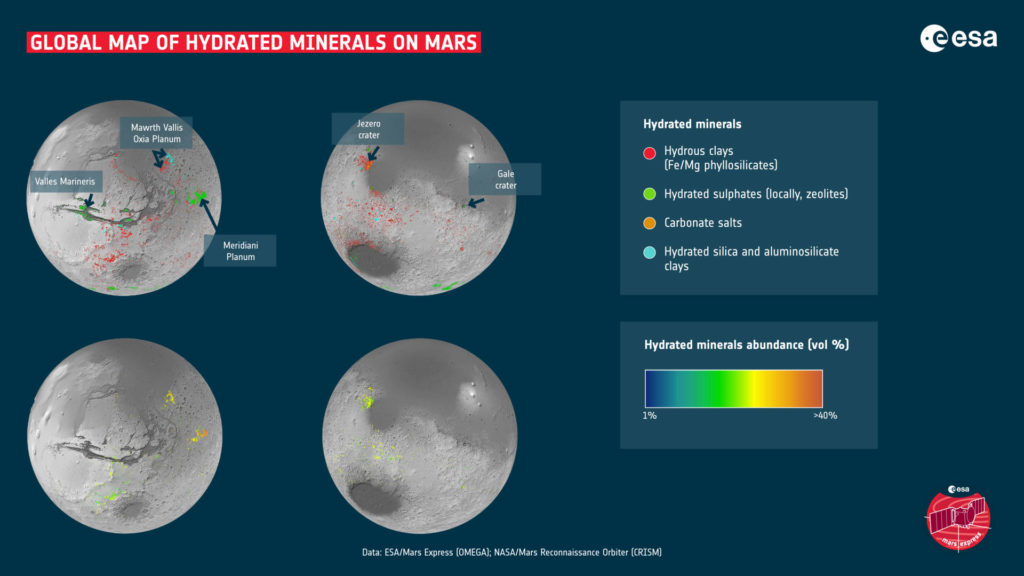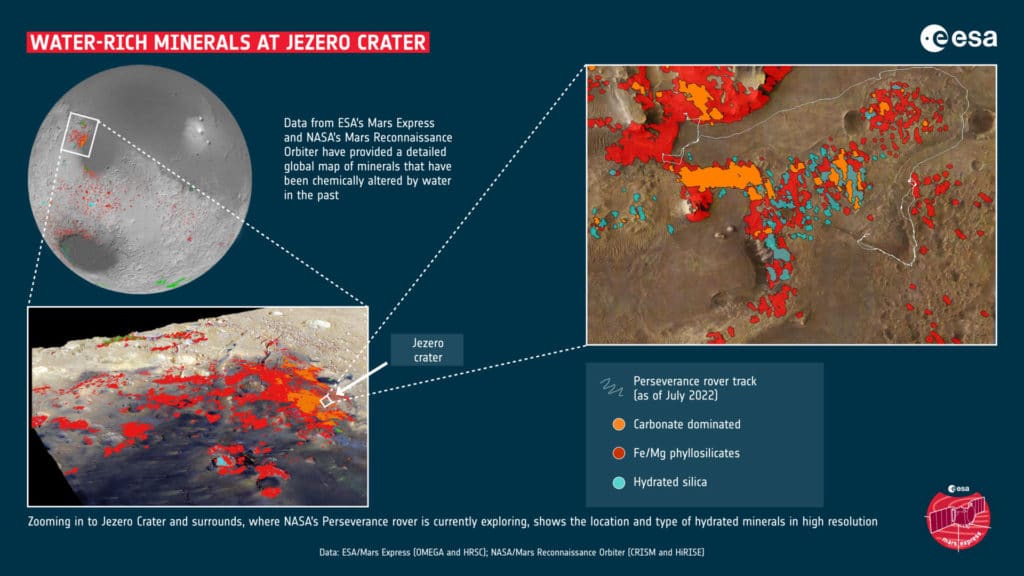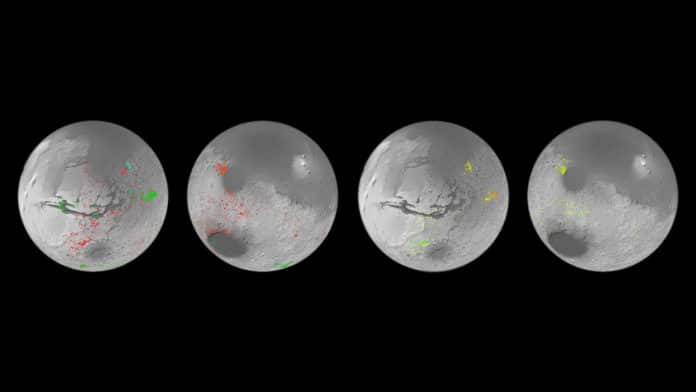Using data from ESA’s Mars Express Observatoire pour la Mineralogie, l’Eau, les Glaces et l’Activité (OMEGA) instrument and NASA’s Mars Reconnaissance Orbiter Compact Reconnaissance Imaging Spectrometer for Mars (CRISM) instrument, scientists have created a new water map of mars that could change our understanding on planet’s watery past. It shows mineral deposits across the planet and suggests where future landings should take place.
More specifically, the map shows the locations and abundances of aqueous minerals from rocks that have been chemically altered by the action of water in the past and have typically been transformed into clays and salts.
The big surprise is the prevalence of minerals such as smectite and vermiculite. Around 1000 outcrops on Mars were known to planetary scientists ten years ago. They become intriguing as geological curiosities because of this. However, the new map has changed this by exposing thousands of such regions in the planet’s oldest regions.

John Carter, Institut d’Astrophysique Spatiale (IAS) and Laboratoire d’Astrophysique de Marseille (LAM), Université Paris-Saclay and Aix Marseille Université, France, said, “This work has now established that when you are studying the ancient terrains in detail, not seeing these minerals is the oddity.”
“This is a paradigm shift for our understanding of the red planet’s history. From the smaller number of aqueous minerals we previously knew were present, water might have been limited in its extent and duration. Now, there can be no doubt that water played a huge role in shaping the geology all around the planet.”
Whether the water was persistent or confined to shorter, more intense episodes remains elusive. This new study does not offer a definite answer, yet it gives researchers a better tool for pursuing the answer.

John said, “I think we have collectively oversimplified Mars. The planetary scientists have tended to think that only a few types of clay minerals on Mars were created during its wet period, then as the water gradually dried up, salts were produced across the planet.”
It’s more intricate than previously assumed, according to this new map. The map illustrates numerous instances where there is intimate mixing of salts and clays, as well as some salts, are thought to be older than others, even if many of the Martian salts presumably did form later than the clays.
John said, “The evolution from lots of water to no water is not as clear cut as we thought, the water didn’t just stop overnight. We see a huge diversity of geological contexts so that no one process or simple timeline can explain the evolution of the mineralogy of Mars. That’s the first result of our study. Second, if you exclude life processes on Earth, Mars exhibits a diversity of mineralogy in geological settings just as Earth does.”
The OMEGA and CRISM instruments are ideally suited to this survey. OMEGA offers global coverage of Mars at a higher spectral resolution and a better signal-to-noise ratio. CRISM uniquely provides high-resolution spectral imaging of the surface (down to 15m/pixel) for highly localized patches of Mars and makes it the most suitable for mapping small regions of interest, such as rover landing sites.
This investigation also provides mission planners with several excellent prospects for potential landing sites in the future for two factors. First of all, there are still water molecules in the aqueous minerals. This provides potential places for water extraction for in-situ resource utilization, essential to building human bases on Mars, together with known locations of subsurface water-ice. Secondly, even before humans go to Mars, the aqueous minerals provide fantastic locations to perform science.
Journal Reference:
- John Carter et al. A Mars Orbital Catalog of Aqueous Alteration Signatures (MOCAAS). Icarus. DOI: 10.1016/j.icarus.2022.115164
- Lucie Riu et al. The M3 project: 3 – Global abundance distribution of hydrated silicates at Mars. Icarus. DOI: 10.1016/j.icarus.2021.114809
